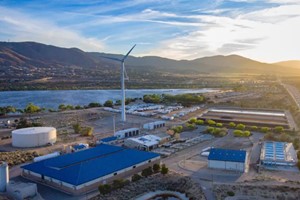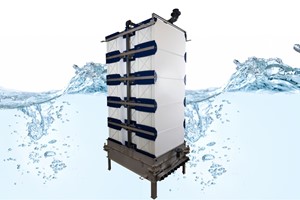Water sanitation and purification currently affects over 3.3 billion people, according to Market Research. Currently, over 900 million people lack access to free, clean water. Unclean water causes major health concerns and illness usually in undeveloped nations located in Africa, Central America, and South America. Water purification treatment technologies which are widely available and used most often are ion exchange, activated carbon filtration and reverse osmosis. Water treatment utilizes industrial scale processes that makes water acceptable for end use, both drinking and industrial. It is also utilized to ensure contaminants are removed prior to returning waste water to the environment. Markets and Markets confirm the increasing demand for clean drinking water and increasing awareness about the importance of water treatment are some of the major factors driving the growth of the water treatment systems industry. The water treatment systems market was valued at USD3.51 Billion in 2014, and is projected to grow at a CAGR of 8.52 percent from 2015 to 2020. The filtration methods segment is the fastest-growing, by technology, in the water treatment systems market. In terms of application, the residential sector is the fastest-growing segment, followed by the non-residential sector. According to Grand view research stringent regulatory guidelines to restrict pollution in drinking water, coupled with global health awareness offered to augment the adoption of water treatment systems market are predicted to drive the point of use water treatment systems market over the forecast period. Point of use water treatment systems are priced in an affordable range for consumers. Increasing health awareness in the developed regions like North America and European regions along with the developing regions in the Asia Pacific, is expected to augment market growth by 2025. Asia Pacific dominated the global point of use water treatment systems market with over 31 percent of the global revenues in the world. In 2016, China point of use water treatment market was valued at USD1.57 billion and is predicted to expand over USD2.47 billion by 2025. China has a large presence of local manufacturers and suppliers on the equipment that helps dominating the global scenario, primarily due to large-scale investments made for developing the technology. Europe emerged as the second-largest market in 2016 and is projected to be valued at USD4.5 Billion, in terms of revenue, in the global point of use water treatment systems market over the forecast period. UK and Russia led the regional market, cumulatively accounting for more than 47 percent of the Europe market. North America point of use water treatment systems market, led by the U.S., was valued at over USD3.5 Billion in 2016 and is predicted to expand over USD4.6 by 2025. North America is an extremely mature market, where consumer awareness towards importance of healthy lifestyle and potable drinking water are high. Key industry players in the point of use water treatment systems market mainly include 3M, Philips, Pentair, Panasonic, Unilever, LG Electronics, EcoWater systems, A.O. Smith, Culligan International, and Amway. It is an established market with numerous local and international companies. Manufacturers in the point of use water treatment systems market are paying close attention to the developments in the water purifier business, and formulating new business strategies to consolidate their market position. Companies are investing heavily in the research and development and introduce innovative designs along with enhanced capacities, to augment their adoption.

Unclean water still affects large populations, posing a threat to overall wellbeing. Water treatment systems industry is forecasted to grow and meet increasing global demand. The fastest growing technology in the market is the filtration methods segment, the largest source of demand being the residential sector. Manufacturers and suppliers are closely affiliated with water purifier businesses to capitalize on opportunities, driven by investments in research and development.
Related Articles










